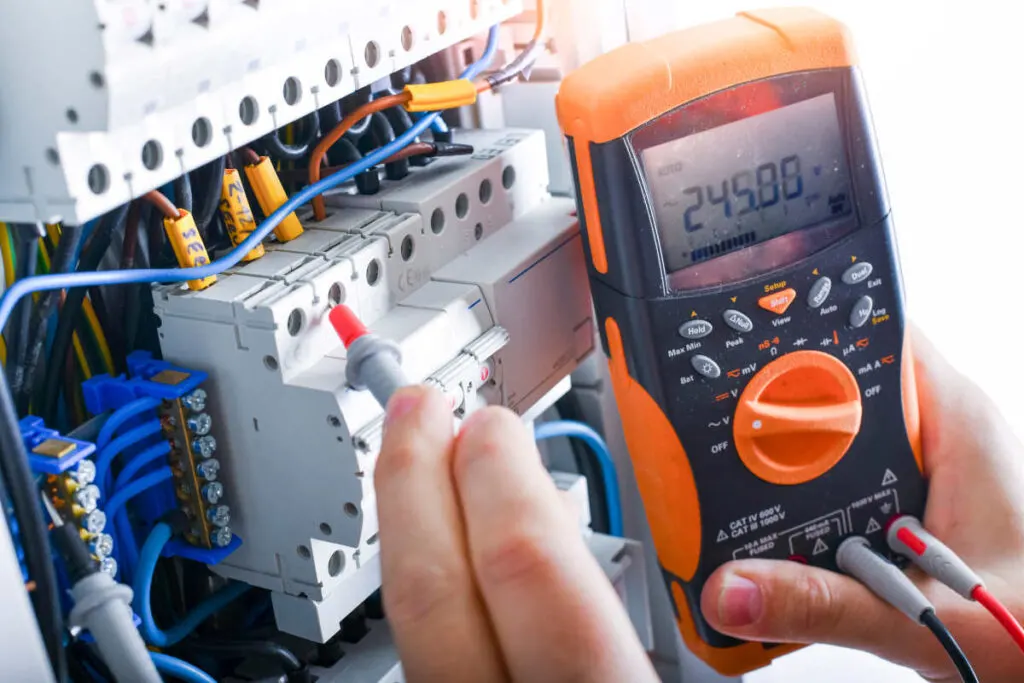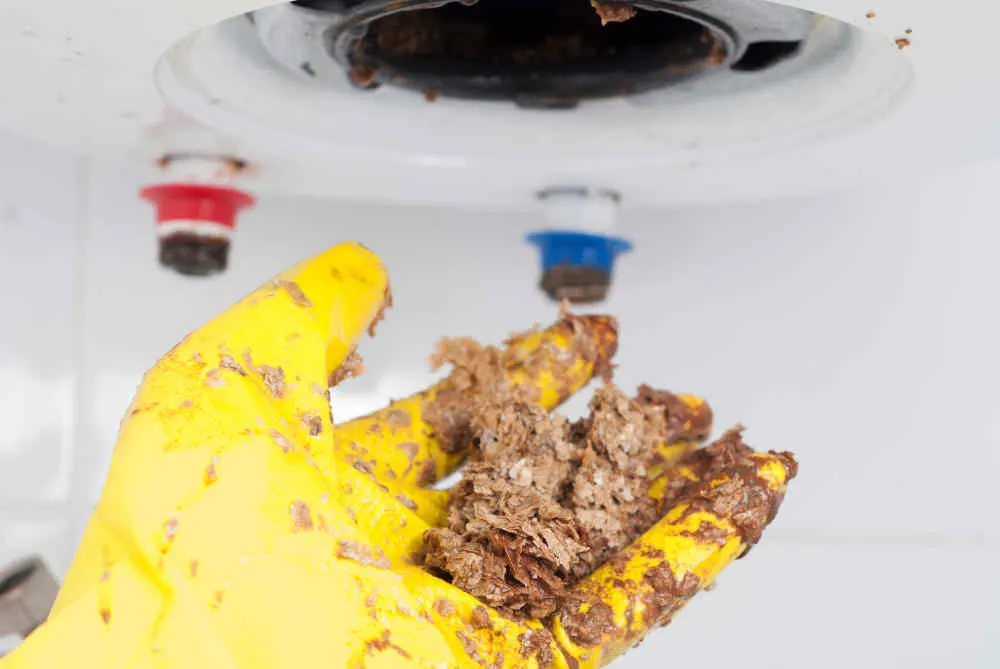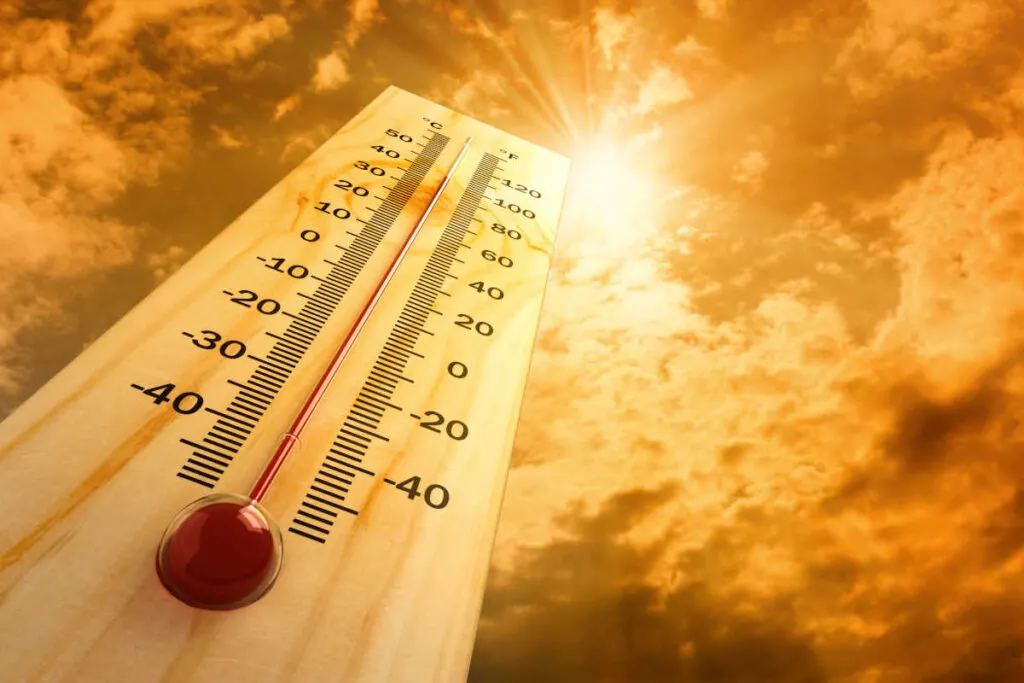
When my friend Chuck complained that his nine-year-old, 50-gallon, electric water heater was causing his electricity bill to skyrocket, it reminded me of my own experiences a few months prior. As I helped Chuck troubleshoot his power-guzzling water heater, I decided to condense the four major aspects to finding and fixing water heater power problems into a useful guide for others dealing with a similar situation.
First, let’s make sure that we’re all on the same page, by defining our problem clearly.
When a water heater is said to be consuming excess power, it usually means that the number of units of metered electricity it is drawing while heating water, significantly surpasses the consumption expected from water heaters of similar capacity and power rating, under similar conditions.
So, strictly speaking, your water heater isn’t really drawing excess power, it’s using up too much energy. What’s the difference?
If you take a look at your water heater’s power rating label, you’ll see the maximum power or current it can draw, given in watts (W). The water heater in the picture below draws a maximum of 4500W at any given moment.
What this means is that this water heater couldn’t really draw more than 4.5 kWh in one hour. If it did, its fuse would likely blow, or the circuit breaker for the water heater would trip, shutting down the unit.
What could, and sometimes does happen is that, despite drawing the maximum power it’s rated for, a water heater might not be heating water to the desired temperature. Or, it might be taking too long to heat the water up to the temperature you’ve set (say, 120 °F).
When that happens, its electricity consumption shoots up, and you end up with a whopper of a bill.
How do I know if my water heater’s really consuming excessive amounts of energy?
That’s what this guide will help you figure out. In addition, it will point you towards other questions you need to ask, and help you answer them, as you work to resolve your water heater power issues. Here’s what we’ll cover:
Is My Water Heater Using Too Much Electricity?

Often, the first warning sign that a water heater is using too much energy comes from an electricity bill that is much higher than normal.
For example, a $206 bill in place of bills that normally range from $80 to $130, may be a sign of an energy usage problem. However, it is important to determine the source of the issue: it might be the HVAC system or any other major domestic appliance that could be driving up the bill.
In Chuck’s case, the water heater was the obvious culprit. He’d left all appliances unplugged, his air-conditioner set to 75°F while he lived and worked remotely for three months, and only his water heater was left on. (His girlfriend took the occasional hot shower at his place when she checked in on his plants.)
Even if unplugging everything at once isn’t an option, you can track the power consumption of your domestic appliances in a few different ways. Going from a zero-cost method to fairly expensive but advanced tracking, here are three different methods:
- To track power consumption without any special equipment, take each domestic appliance off the meter by unplugging them one at a time while tracking the meter reading from day to day. The appliance that causes the meter reading to dip sharply when unplugged is the most likely root cause.
- Plug each appliance into a simple, electricity monitor that will track how much electricity it consumes. The drawback to using one of those is it only works when the appliance is not hardwired. (Amazon carries a wide variety of affordable electrical power consumption watt meters. I got this one couple of years ago and it has saved me lots of money by helping diagnose faulty energy-hogging appliances.
- Install an advanced home energy monitor to keep track of electricity usage by each item that draws power. (See the range of energy monitors on Amazon.)
Once you’re confident that your water heater is the energy-hog, you still need to assure yourself that the spike you’re seeing significantly surpasses the expected power usage for your water heater.
How to Benchmark and Calculate Electric Water Heater Power Usage
As water heater power consumption can vary month to month by a noticeable margin, it’s essential to determine what the ‘normal’ or ‘expected’ value is, to troubleshoot problems related to usage. This can be done in two ways:
- Six-month Average: Calculate the average electricity bill value for the last six months. This helps determine how far outside the average range any particular month’s usage falls.
- Time-of-year Average: If you’ve been living in the same house for a while, pull up your utilities history, and compare the bill with those for the same time of year (the same month of the previous year, plus the month prior to or following it) over the last couple of years. This will reveal whether higher power usage is typical for the time of year, for instance, because of extremely cold or hot weather.
When we did this in Chuck’s case, the $206 whopper worked out to a full 99% extra over the six-month average of $104. But when we compared it to the time-of-year average, it stood only 69% higher than the average of $122.
Now that he had a better idea how ‘far out’ the $206 bill really was, we could swing into action figuring out why his water heater was chowing power.
How Do I Monitor My Water Heater’s Power Consumption?
If you’ve decided that the obvious next step is taking stock of your home’s recent hot water consumption, you’re ahead of the curve. So, have you asked yourself whether there have been:
- houseguests running up the number of showers and baths?
- extra loads of laundry (say, because of football practice or a new pet)?
- more dirty dishes than usual (because you ate out less or entertained more)?
While it might not seem like a few extra showers or laundry loads would run your electricity bills way high, crunching the numbers could surprise you. The hot water usage table given here follows DOE guidelines in estimating the amount of hot water required for different daily activities.
| Activity | Hot water flow1 | Quantity2 | Temperature3 |
|---|---|---|---|
| Brush Teeth/ Shave (5 minutes) | 0.75 gal / min | 3.75 gal | 100 °F (38 °C) |
| Shower (8 minutes) | 2.50 gal / min | 10.00 gal | 120 °F (49 °C) |
| Bath | not relevant | 25.00 gal | 110 °F (43 °C) |
| Manual Dishwashing (10 minutes) | 4.00 gal / min | 20.00 gal | 120 °F (49 °C) |
| Dishwasher Load | not relevant | 8.00 gal | 140 °F (60 °C) |
| Washing Machine (15 lbs.) | not relevant | 25.00 gal | 100 °F (38 °C) |
From the table above, it’s a reasonable estimate that a family of four might need approximately 100 gallons of hot water per day, heated to an average temperature of 110 °F. Assuming that the water entering the hot water tank is at a temperature of 50 °F, this means that the heater has to raise the temperature of 100 gal. of water by 60 °F.
The energy required to heat water is roughly 1 British Thermal Unit (BTU) for every 1 lb. (0.12 gallons) of water heated by 1 °F. This is known as the ‘specific heat’ of water. One metered unit of electricity, that is, 1 kWh is equal to 3412 BTU (approximately 3400 BTU).
So, how much power would a water heater consume while it worked to increase the temperature of 100 gal. of water through 60 °F? Using the table below, we can see that it would require roughly 14.6 kWh. When you consider that just two extra houseguests could push up hot water requirements by as much as 50 gal., you can see that that would drive up power consumption to 22 kWh.
| Hot water (gal.) | Hot water (lbs.) | Energy to raise temp. by 60 °F (BTU) | Energy to raise temp. by 60 °F (kWh) | Energy to raise temp. by 70 °F (BTU) | Energy to raise temp. by 70 °F (kWh) |
|---|---|---|---|---|---|
| 50 | 416 | 24,960 | 7.3 | 29,120 | 8.5 |
| 60 | 500 | 30,000 | 8.8 | 35,000 | 10.3 |
| 70 | 583 | 34,980 | 10.3 | 40,810 | 12.0 |
| 80 | 666 | 39,960 | 11.7 | 46,620 | 13.7 |
| 90 | 750 | 45,000 | 13.2 | 52,500 | 15.4 |
| 100 | 833 | 49,980 | 14.6 | 58,310 | 17.1 |
| 110 | 916 | 54,960 | 16.1 | 64,120 | 18.8 |
| 120 | 999 | 59,940 | 17.6 | 69,930 | 20.5 |
| 130 | 1,083 | 64,980 | 19.0 | 75,810 | 22.2 |
| 140 | 1,166 | 69,960 | 20.5 | 81,620 | 23.9 |
To see how much difference this would make to your electricity bill, simply multiply the kWh units by cost per unit of electricity charged by your electricity company.
Say you’re paying $0.21 per unit. To heat 100 gal. to 110 °F, your hot water heater would consume $3.07 worth of electricity in a day, whereas it would need $4.61 to heat 150 gal.. Over a month, this difference alone would push your bill up by $46!
Assuming you’ve done the math, and now you know beyond doubt that your water heater bill can’t be explained away as extra usage, what next? Read on!
Usual Suspects that Drive Up Water Heating Bills
Leaky Plumbing
The most common reason why your water heater might be using up excess power is a hot water leak. As hot water leaks out, cold water flows in to take its place, and the water heater could just be endlessly cycling back on to get the water back to the desired temperature.
Take a quick look around your water heater – be sure to check both the top and the bottom. If you notice significant amounts of water or moisture either on the floor below or on top of the heater, you’ll need to verify that it’s hot water that’s leaking.
Before you lay hands on the water heater, though, you need to disconnect the electricity or gas supply to the unit. To do this, locate the mains panel, and flip the circuit breakers for the water heater (there are usually two 30A breakers) to ‘off’.
Make sure to tag them (e.g., with a ‘LEAVE OFF’ sign taped over) while you investigate the leak.
Now, go back to your water heater, and turn off the cold water inlet valve. This is typically either a dial valve or a ball valve. Once you’ve turned off the power and water inlets, you can get to work zeroing in on the source of the leak. First, eliminate all extra moisture by mopping up puddles and trickles using a rag.
A water heater could leak hot water through a loose connector, a broken or leaky pipe, or even a corroded inner tank within the water heater. If the source of a leak is not obvious, locate it by placing paper towels at different points along the hot water outlet pipe, after first drying the area.
While it is safe to continue to use the water heater if it is leaking, it is best to fix it as soon as possible to prevent moisture damage and excessive energy consumption caused by the leak.
Hot water pooling below your water heater could either be trickling out the T&P relief valve, or it could be a sign that the inner tank is corroded. A leak at the bottom of a water heater could be a serious issue, requiring the unit to be replaced, in which case, you might need the services of a professional plumber.
If you decide to replace it yourself, read my guide on how to transport your new water heater safely in the back of your car.
If the hot water outlet is leaking, though, you could try the following fixes:
- Tighten the connector (called a ‘dielectric union’ or a ‘dielectric nipple’) with a wrench.
- If this doesn’t work, check the connector carefully for signs of corrosion. In this case, you’ll need to replace the connector.
For a leaky pipe, try replacing the flex line that’s the hot water outlet.
Accumulation of Sediment
So… if it’s not a plumbing leak, what is it?
It could be a build-up of sediment within your water heater. If you’re wondering what that could possibly have to do with power consumption, you’re not alone – I had no clue until recently that accumulated sediment could bring down my water heater efficiency by as much as 40%!
As you know, the piped water supply to your house carries small quantities of minerals and some amount of plain old muck mixed in with it.
Sediment build up in an electric water heater happens when solid matter (minerals, muck, etc.) accumulates on the bottom of the water heater over time. This can prevent the lower heating element from working effectively, resulting in inefficient heating of water and excessive power consumption.
Obviously, when one of the two heating elements is unable to heat the water, your water heater will keep drawing more and more power, trying to get the water up to the desired temperature. This could result in a whopping electricity bill. OK, so what’s the fix?
How Do I Flush out Sediment From My Water Heater?

In order to flush out the sediment, it is necessary to drain your water heater completely. Here are the steps to follow:
- First, disconnect the power supply and turn off the cold water inlet valve. See here for how to do this.
- Next, either set up a large bucket under the water heater drain valve at the bottom or connect a hose from the drain valve to a convenient floor drain. Be sure to use a connector to fix the hose on tight, so you don’t have to deal with water flooding your floor.
- Open a hot water faucet somewhere in the house and let the hot water run out. (You could use a bucket or tub to catch the water and prevent waste.)
- Figure out how to open the water heater drain valve, and open it. Some models will have a lock screw that needs a flat-blade screwdriver to open it, while others will have a plastic or brass spigot that you can turn on, just like a faucet.
- As the water heater drains, observe closely. If the water is murky, turn the cold water inlet valve on and off in small bursts. Cycle the valve on and off, flushing out all the sediment, until you get clear water running out the drain valve.
Now you’ve drained out your water heater of accumulated sediment, you should see your power bill go back to normal. Experts recommend draining your water heater at least once a year.
For areas with a supply of ‘hard’ water, which contains higher quantities of minerals mixed into it, you may need to drain your water heater more often, say, once every six months.
As an alternative, if you live in an area with moderately hard water, you could investigate a self-cleaning water heater.
Water Heater Temperature Set Too High

By turning the water heater all the way up you are increasing the amount of energy that is lost when it is on standby. This is because the higher the temperature difference between the ambient temperature and the water the faster the energy transfer will be.
You can save up to 10% by lowering the temperature to the recommended levels. Keep in mind that the hot water won’t last as long.
Heat Loss Through Poor Insulation
If none of the above fixes has worked for you, you could be dealing with significant amounts of heat loss. You’ve probably already figured out that hot water keeps losing heat while it sits in the tank, as well as in the pipes that bring it to your faucet or showerhead.
The DOE estimates that poorly insulated water tanks can cause between 25% and 45% of the heat to be lost, termed ‘standby heat loss. Again, poor insulation on distribution pipes, says the DOE, can cause hot water to cool off by as much as 4 °F.
How can I tell whether my water heater or plumbing has a thermal insulation problem?
Answering the following questions can help you decide if your hot water system has a heat loss issue:
Is the water heated dented?
A dent in the water heater housing will compress the insulation and in turn drastically reduce the insulation performance.
Your best bet is to add additional insulation (amazon) around the heater to compensate for the compressed section.
How old is your water heater?
Most modern electric water heaters come with pretty standard thermal insulation around the inner tank, so standby heat loss is unlikely to be a significant problem.
The DOE recommends checking to see if your (newer) water heater has an ‘R’ value of 24 or more. If you have a really old water heater, say, twelve to fifteen years or even older, its insulation might not be good enough to prevent significant heat loss.
(FYI, in gas water heaters, even the newer models have much thinner insulation around the inner water tank, so standby heat loss can be up to 8 times as much compared to electric models.)
Where is your water heater located?
Manufacturers usually calculate the energy efficiency of water heaters by taking into account the ambient, or room temperature. The ‘EF’ ratings on older models and the ‘First Hour Rating’ numbers on newer ones are all based on the surrounding air temperature being between 68 °F and 78 °F (roughly 20 °C to 25 °C).
If your water heater is located in an unheated basement area or crawl space, or even outside the house, it’s exposed to a lot of fluctuations in temperature. A hot water tank can lose as much as 45% of its heat in an unheated space.
What material are your pipes made of?
Older plumbing tends to be made of metal, while newer installations prefer to use pipes made of PVC. If your water heater is an old model, you might even have copper pipes leading out of it! It is vital that the pipes are insulated.
Everyone knows that plastic is a good insulator and metal is a good conductor of heat. So, obviously, plastic plumbing would retain heat better than metal pipes. If your hot water plumbing system has metal pipes, that’s an urgent reason to try the fix described below.
How far is your plumbing carrying the hot water?
Again, the farther hot water has to travel through pipes that may be cold, the more heat is lost. If you live in a big house, or in a building where the water heater is located all the way at the other end from your faucets, this could be causing your electric bill to spiral upwards.
Alright, so now you’ve reckoned you’re probably paying higher power bills on account of heat loss. And you want to fix that. For all the problems described in 1 through 4 above, the solution can be summed up in two words – better insulation.
Whether it’s your water heater or distribution pipes, you can prevent a substantial amount of heat loss by adding insulation around them. You can buy a ‘batt’ or roll of fiberglass or foam insulation from your local hardware store. Depending on your requirements, you can go for thinner (less than an inch) or a thicker roll (up to several inches thick).
Tip: Leaving a narrow gap of about half an inch between your heater and the insulation blanket will make for better thermal insulation than allowing the blanket to rub up close to the unit.
Now you know all about what might be causing your water heater to consume excess power. You’re all set to lower your electricity bill, rescue your $$$, and potentially save the environment!
References
- US Dept. of Energy. 2021. Sizing a new water heater. https://www.energy.gov/energysaver/sizing-new-water-heater
- US Geological Survey. 2021. How much water do you use at home? https://water.usgs.gov/edu/activity-percapita.php
- Water Footprint Calculator. 2020. Indoor water use at home. https://www.watercalculator.org/footprint/indoor-water-use-at-home/



